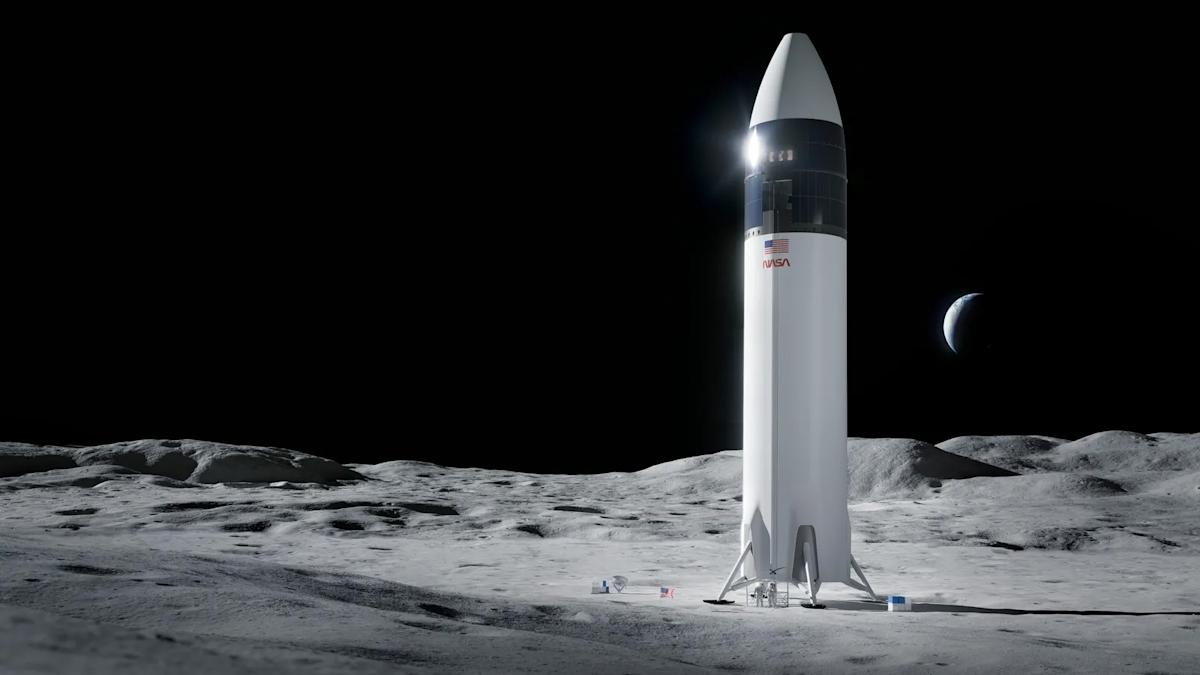
Members of NASA’s Aerospace Safety Advisory Panel have said they believe the Human Landing System (HLS) version of Starship, which is supposed to land astronauts on the Moon as part of the Artemis III mission in 2027, is unlikely to hit its deadline. Indeed, they claim it could be years behind schedule, raising the prospect of the Artemis III mission not happening at all.
Although NASA will use its Space Launch System (SLS) to slingshot astronauts around the Moon in 2026, the plan for several years has been to utilize SpaceX’s Starship launch vehicle for the Artemis III Moon landing mission the following year. But despite Starship’s latest successful flight, its series of explosive disasters earlier this year did little to raise NASA’s confidence in its readiness for a 2027 launch.
After the safety advisory panel met with Starship engineers and company executives at the SpaceX Starbase facility in August, they now believe the HLS system could be years behind schedule.
Looking beyond the recent explosive results of Starship launches, the organization said significant delays in the launch of Starship Block 3 models had pushed back crucial proof of concept tests for in-orbit refuelling using cryogenic materials like liquid oxygen and liquid methane. This refuelling is a crucial component in the Artemis III mission, as Starship cannot launch with enough fuel to make it to the lunar surface and back without it.
One concept of how the Artemis III lunar mission might work, involving several orbital refuelling missions which have yet to be proven viable. Credit: Public domain
Yet as we approach the final months of 2025, HLS hasn’t even safely reached a stable low Earth orbit with Starship, let alone demonstrated in-orbit refuelling.
The safety body hopes that this won’t be as difficult as some of the engineers believe it will be, but it still believes in Starhip as a project—just not in its timeline.
“There is no competitor, whether government or industry, that has this full combination of factors that yield this high a manufacturing and flight tempo, with their direct effects on reliability increases and cost reduction,” said advisory panel member Paul Hill (via SpaceNews). “However, this sets up competing priorities for Starship and HLS development, which could impact the Artemis schedule.”
Any further delay in developing Starship—or the Axiom spacesuit design, for that matter—is likely to result in a significant postponement of the Artemis III mission, Hill noted.
“These programs remain essential components on the critical path for the success of Artemis 3 and subsequent missions, and need to be critically assessed in the context of the overall mission schedule to understand what’s achievable and when,” explained fellow panellist Bill Bray.
Disclaimer: This news has been automatically collected from the source link above. Our website does not create, edit, or publish the content. All information, statements, and opinions expressed belong solely to the original publisher. We are not responsible or liable for the accuracy, reliability, or completeness of any news, nor for any statements, views, or claims made in the content. All rights remain with the respective source.
